Abstract
The electrical membrane resistance ρ0 of the marine alga Valonia utricularis shows a marked maximum in dependence on the turgor pressure. The critical pressure, Pc, at which the maximum occurs, as well as its absolute value, ρ0max, are strongly volume-dependent. Both Pc and ρ0max, increase with decreasing cell volume. It seems likely, that these relationships reflect the elastic properties of the cell wall, because the volumetric elastic modulus, ε, is also volume-dependent, increasing hyperbolically with cell volume. Both Pc and ρ0max can be affected by external application of indole-3-acetic acid at concentrations of 2·10−7m to 2 ·10−5m. The critical pressure is shifted by 1.2 to 6 bars toward higher pressures and the maximum membrane resistance increased up to 5.6-fold. During the course of the experiments (up to 4 hours), however, IAA had no effect on the volumetric elastic modulus, ε.
The maximum in membrane resistance is discussed in terms of a pressure-dependent change of potassium fluxes. The volume dependence of Pc and ρ0max suggests that not only turgor pressure but also ε must be considered as a regulating parameter during turgor pressure regulation. On this basis a hypothesis is presented for the transformation of both, a pressure signal and of changes in the elastic properties of the cell wall into alterations of ion fluxes. It is assumed that the combined effects of tension and compression of the membranes as well as the interaction between membrane and cell wall opposingly change the number of transport sites for K+ providing a turgor-sensing mechanism that regulates ion fluxes. The IAA effects demonstrated are consistent with this view, suggesting that the basic mechanisms for turgor pressure regulation and growth regulation are similar.
Any relation connecting growth rate with turgor pressure should be governed by two parameters, i.e. by a yielding pressure, at which cell growth starts, and by the critical pressure, at which it ceases again.
Full text
PDF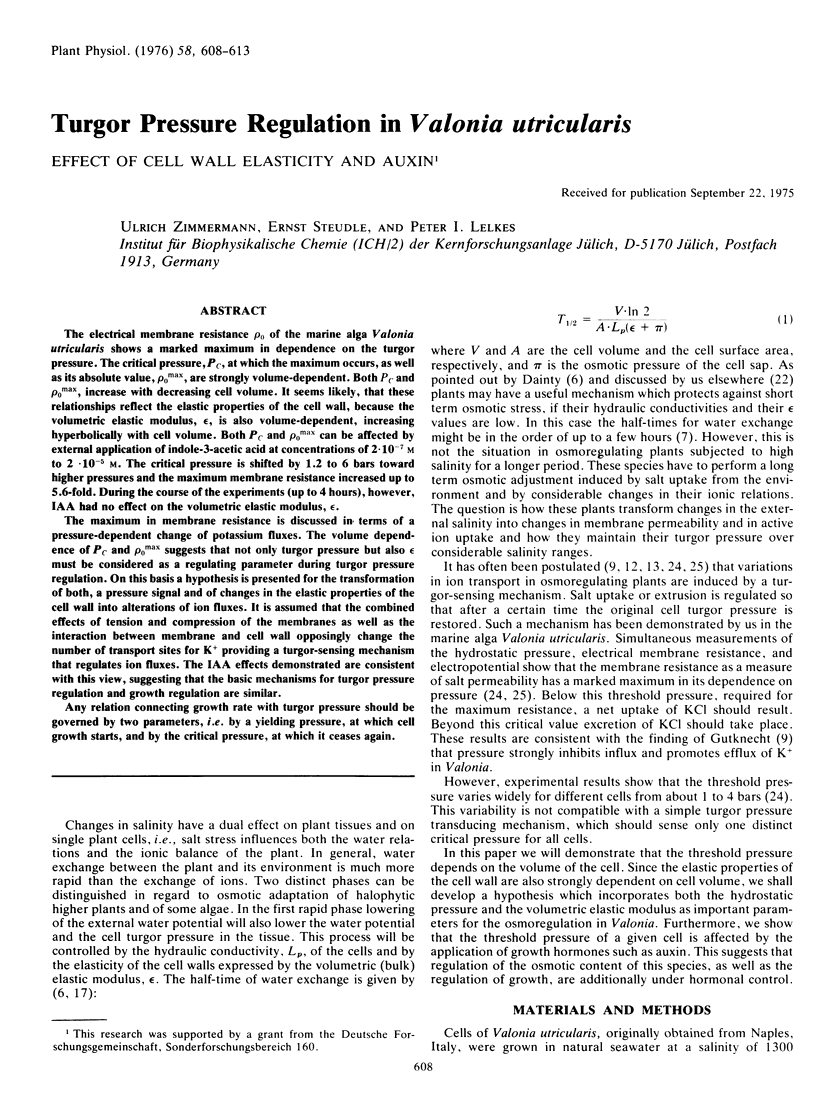

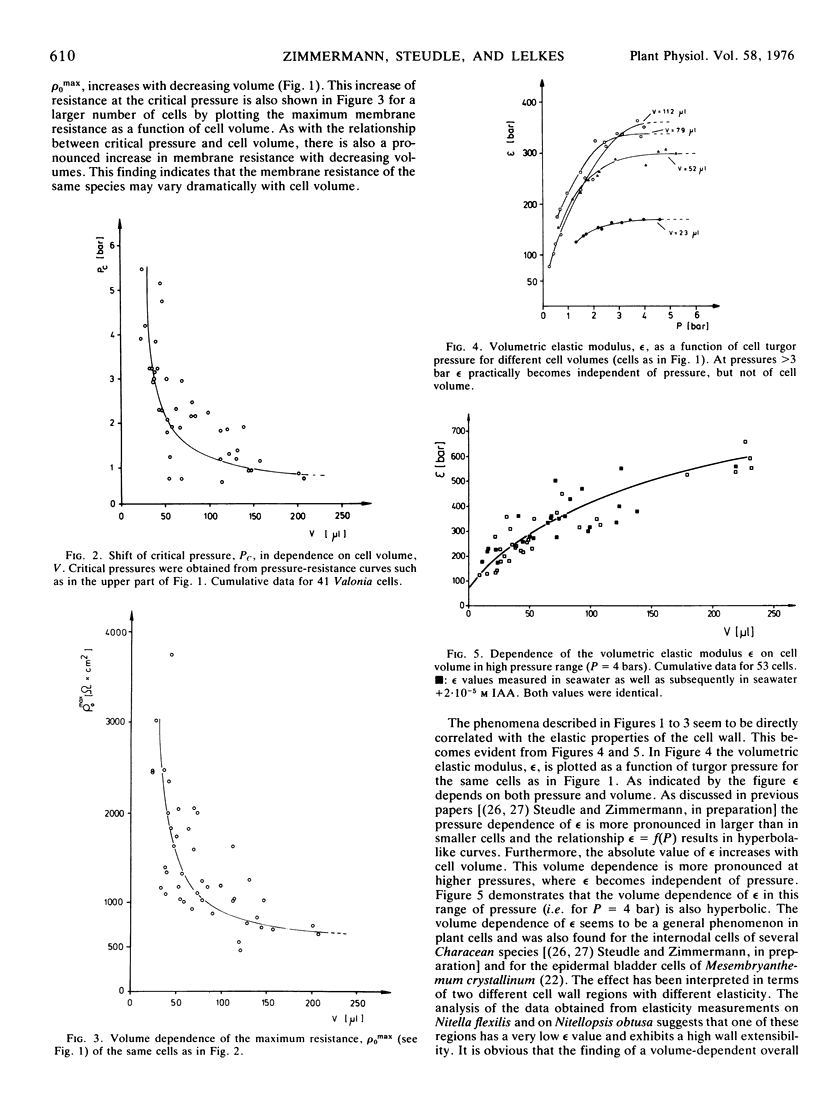
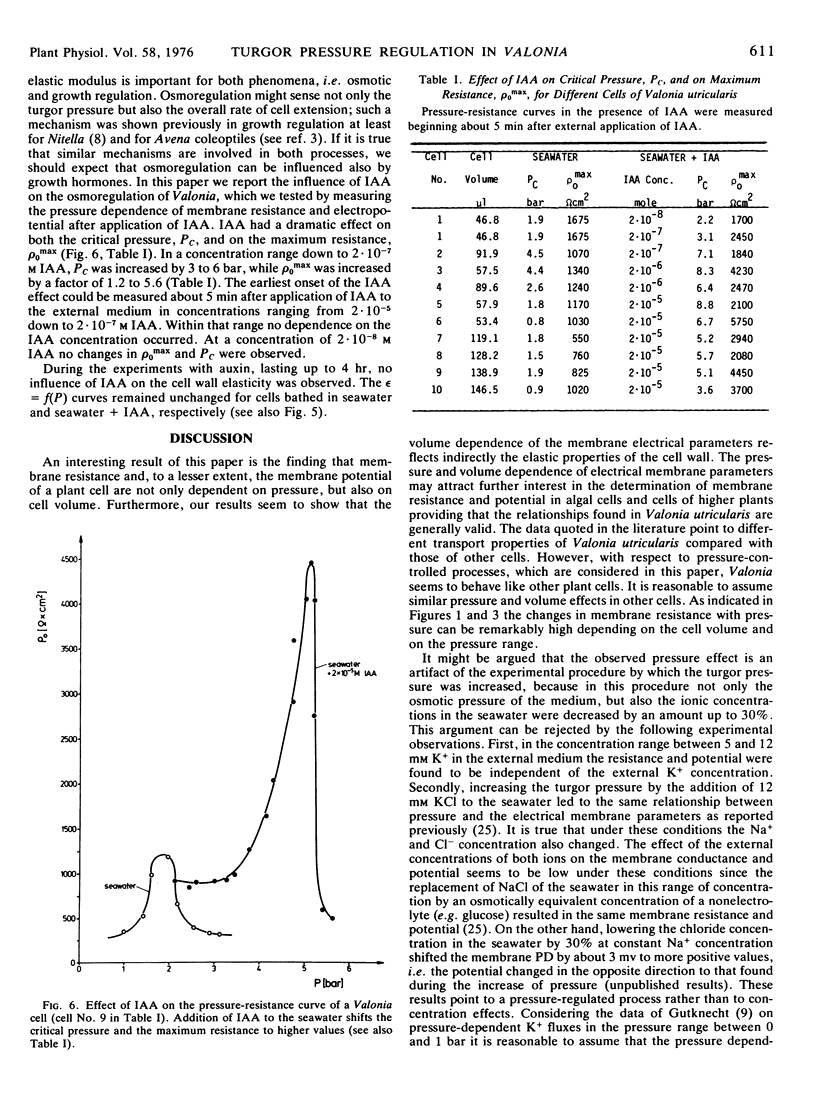
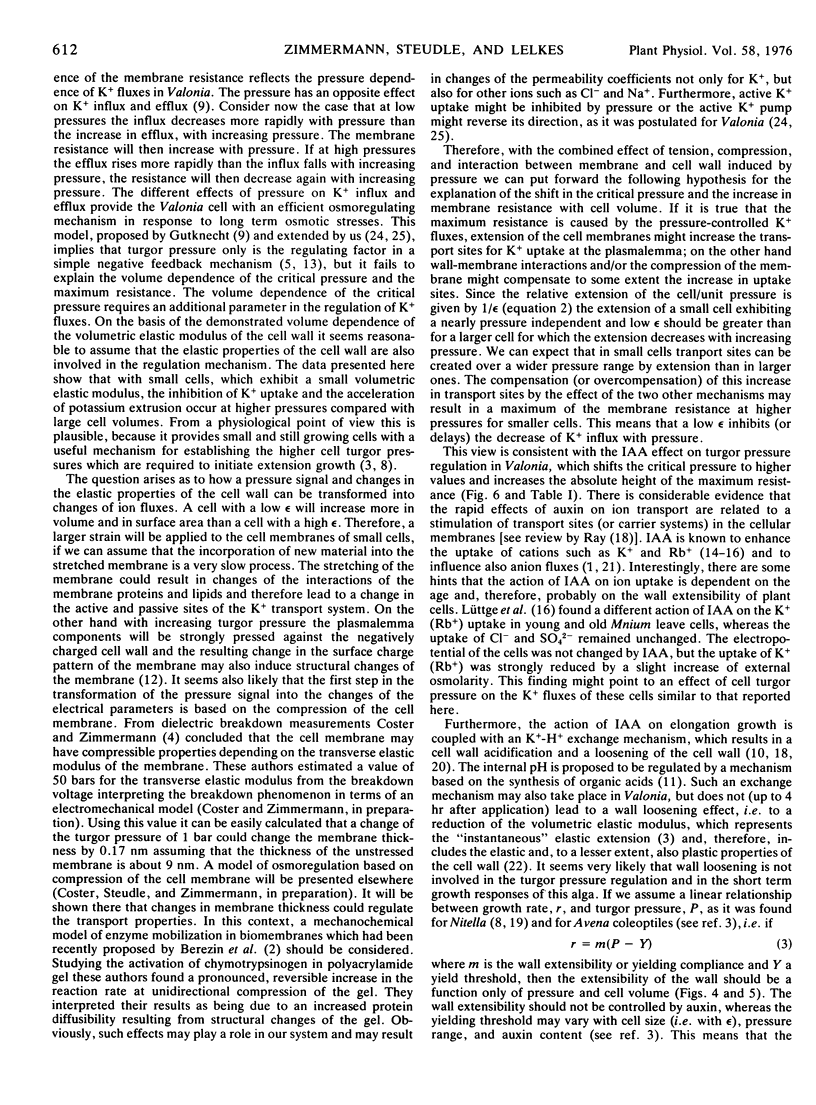
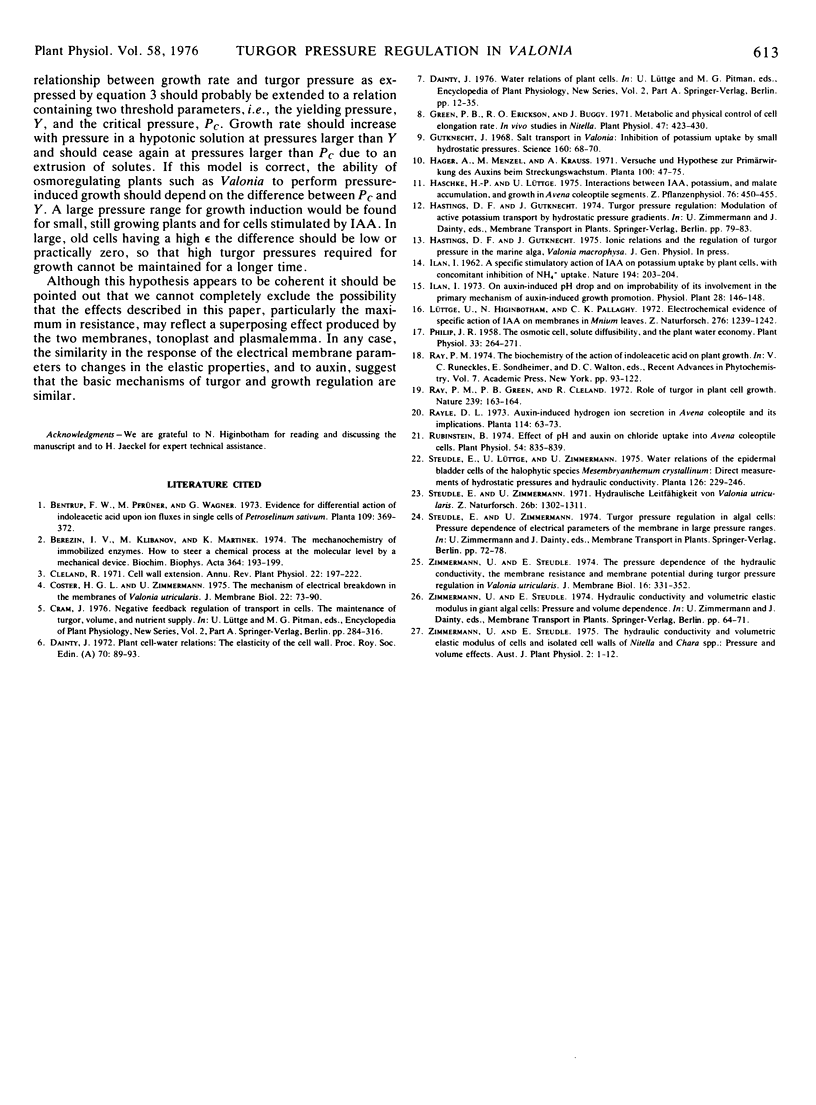
Selected References
These references are in PubMed. This may not be the complete list of references from this article.
- Berezin I. V., Klibanov A. M., Martinek K. The mechanochemistry of immobilized enzymes. How to steer a chemical process at the molecular level by a mechanical device. Biochim Biophys Acta. 1974 Oct 17;364(2):193–199. doi: 10.1016/0005-2744(74)90003-5. [DOI] [PubMed] [Google Scholar]
- Coster H. G., Simmermann U. The mechanism of electrical breakdown in the membranes of Valonai utricularis. J Membr Biol. 1975 Jun 3;22(1):73–90. doi: 10.1007/BF01868164. [DOI] [PubMed] [Google Scholar]
- Green P. B., Erickson R. O., Buggy J. Metabolic and physical control of cell elongation rate: in vivo studies in nitella. Plant Physiol. 1971 Mar;47(3):423–430. doi: 10.1104/pp.47.3.423. [DOI] [PMC free article] [PubMed] [Google Scholar]
- Gutknecht J. Salt transport in Valonia: inhibition of potassium uptake by small hydrostatic pressures. Science. 1968 Apr 5;160(3823):68–70. doi: 10.1126/science.160.3823.68. [DOI] [PubMed] [Google Scholar]
- Lüttge U., Higinbotham N., Pallaghy C. K. Electrochemical evidence of specific action of indole acetic acid on membranes in Mnium leeaves. Z Naturforsch B. 1972 Oct;27(10):1239–1242. doi: 10.1515/znb-1972-1024. [DOI] [PubMed] [Google Scholar]
- Philip J. R. The Osmotic Cell, Solute Diffusibility, and the Plant Water Economy. Plant Physiol. 1958 Jul;33(4):264–271. doi: 10.1104/pp.33.4.264. [DOI] [PMC free article] [PubMed] [Google Scholar]
- Rubinstein B. Effect of pH and Auxin on Chloride Uptake into Avena Coleoptile Cells. Plant Physiol. 1974 Dec;54(6):835–839. doi: 10.1104/pp.54.6.835. [DOI] [PMC free article] [PubMed] [Google Scholar]
- Steudle E., Zimmermann U. Hydraulische Leitfähigkeit von Valonia utricularis. Z Naturforsch B. 1971 Dec;26(12):1302–1311. [PubMed] [Google Scholar]
- Zimmermann U., Steudle E. The pressure-dependence of the hydraulic conductivity, the membrane resistance and membrane potential during turgor pressure regulation in Valonia utricularis. J Membr Biol. 1974;16(4):331–352. doi: 10.1007/BF01872422. [DOI] [PubMed] [Google Scholar]


